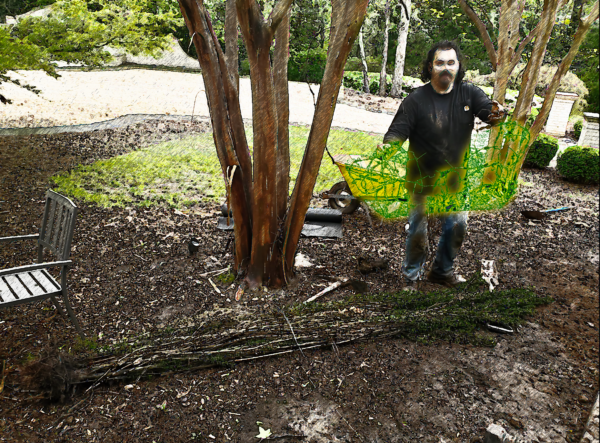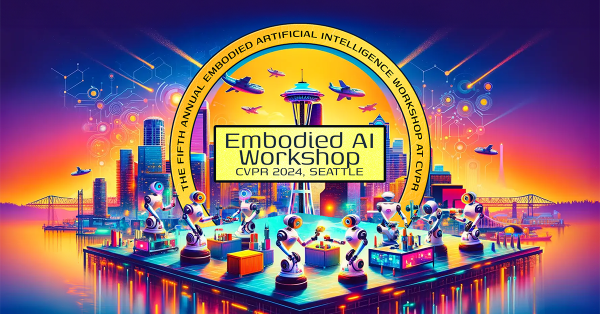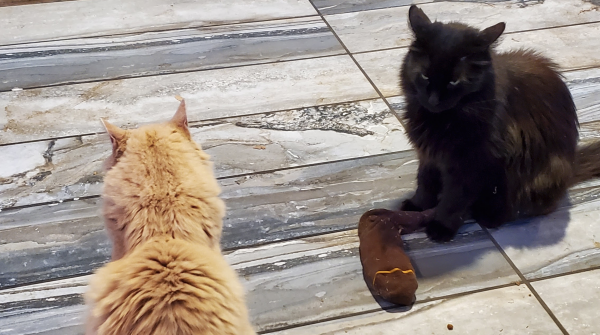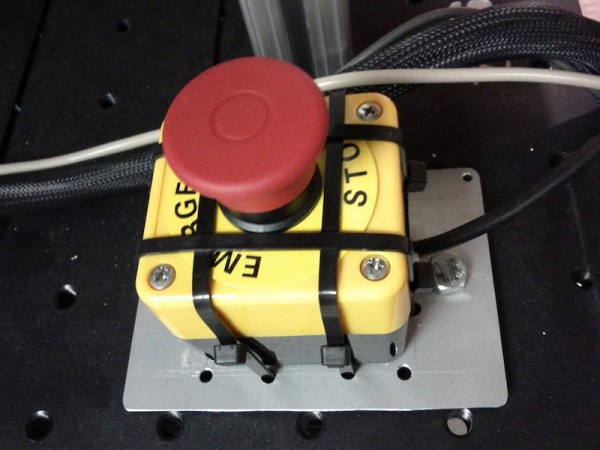
One by one, trees and bushes on our property have been dying. The property is large - when we fled the fires in California during the pandemic, we lucked out in finding a large place that had been on the market for quite a while - so at first we thought that was simply par for the course. But they kept dying.
Eventually, what we discovered is that many of the trees on the property were planted without the removal of their transport cages. This can cause the roots to get choked, to turn back on themselves, and as the tree grows, the increasingly packed root ball topped by the increasingly heavy tree turns into a weighted ball bearing, waiting to tip over in heavy winds, heavy rain, or just from the tree's own starved weight.
But it's easier to not remove it, the problem is practically invisible, and the tree looks good for a while - and by the time the tree falls, it will be almost impossible to identify who made the initial mistake.
This is a beautiful house on beautiful land, but many of the things in this house are like that. Trees are planted with their transport cages still on, so they eventually fall over. Gutter drains were buried without covering them with fabric, so they fill with dirt. Soil pipes are buried without cleanouts. Drywall in access rooms has random holes punched in it.
And, most spectacularly, a door was installed in a storage room which was too small for the safe stored in that room to be removed. I mean, what were they thinking? I guess they weren't - or, perhaps that was a security feature, to prevent it from being stolen? Certainly, you can't sneak it out of the room, but, also, it likely weighs around a ton, so no-one can run off with it - they didn't need to wall it in.
But, regardless, hey! We get a safe.
Now, we were dealing with the problem with our drains, and the foreman told us he'd need to take up the last man standing in a row of bushes near one of the drains. These had been dying, one or two per year, since we arrived, and the last one was literally held together with zipties. So I agreed.
And when he dug it up, he found that it - and all the bushes in that row - had cages on their root barrels. You can see him holding one of these in the banner image from this post. The root system was so tight inside it that he was surprised that it had survived that long.
So my point, and I did have one, is that doing a job that looks right from the outside may not be doing it well enough for the job to be done right. And right, in this case, I define as not failing unexpectedly long before its time because someone simply didn't want to finish the work.
I suspect that the people who managed this properly previously were focused on forcing it, no matter how much money it took. As my wife put it, you put in a lawn, let it grow, then cut that growth and take all the nutrients that it harvested out of the soil away, forcing you to fertilize the lawn with chemicals to keep it alive. You can do that, but it's like driving down a mountain road at too high a speed, constantly riding the wheel, brakes and accelerator to keep yourself on the road. We prefer a healthier approach, where, when possible, things are left to biodegrade where they are, or you create compost out of the clipping.
That doesn't always work, and, in a way, it's a luxury all its own. But regardless of how you run your lawn, if you take the time to cut the root balls off and to properly wrap your drains, you'll find yourself spending less money in the long run fixing problems that should never have happened in the first place.

-the Centaur
Pictured: The cage that our foreman discovered once they dug up the bush, and the gutter downspout drain that our foreman replaced for us once we all figured out what drains needed to be replaced.


























